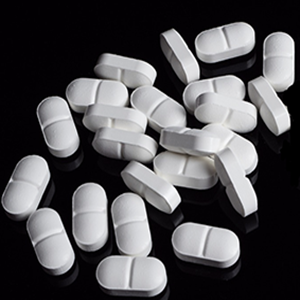Original Articles
Vol. 1 No. 3 (2022)
Pleiotropic effects of anti-thrombotic therapies: have direct oral anticoagulants any anti-inflammatory effect?

Publisher's note
All claims expressed in this article are solely those of the authors and do not necessarily represent those of their affiliated organizations, or those of the publisher, the editors and the reviewers. Any product that may be evaluated in this article or claim that may be made by its manufacturer is not guaranteed or endorsed by the publisher.
All claims expressed in this article are solely those of the authors and do not necessarily represent those of their affiliated organizations, or those of the publisher, the editors and the reviewers. Any product that may be evaluated in this article or claim that may be made by its manufacturer is not guaranteed or endorsed by the publisher.
Received: 16 August 2022
Accepted: 28 November 2022
Accepted: 28 November 2022
974
Views
358
Downloads
Similar Articles
- Alice Lipari, Esmeralda Capristo, Antonietta Ferretti, Erica De Candia, Anticoagulation in obese patients: challenges and strategies , Bleeding, Thrombosis and Vascular Biology: Vol. 4 No. 3 (2025)
- CO08 | The utility of urine qualitative assessment for direct oral anticoagulants in routine clinical practice , Bleeding, Thrombosis and Vascular Biology: Vol. 4 No. s1 (2025)
- PO31 | Comparative analysis of anticoagulant therapy in patients over 90 years old: vitamin K antagonists versus direct oral anticoagulants , Bleeding, Thrombosis and Vascular Biology: Vol. 4 No. s1 (2025)
- PO18 | Does muscle mass matter? Appendicular lean mass as a determinant of anti-XA activity in elderly patientes , Bleeding, Thrombosis and Vascular Biology: Vol. 4 No. s1 (2025)
- PO13 | Monitoring of anti-factor XA activity levels in patients treated with direct oral anticoagulants and concomitant tyrosine kinase inhibitors agents: a monocentric experience , Bleeding, Thrombosis and Vascular Biology: Vol. 4 No. s1 (2025)
- PO93 | Use of DOACS in heart transplantation recipients , Bleeding, Thrombosis and Vascular Biology: Vol. 4 No. s1 (2025)
- PO70 | Clinical safety and monitoring of apixaban combined with tacrolimus and everolimus in kidney transplant patients: a prospective study , Bleeding, Thrombosis and Vascular Biology: Vol. 4 No. s1 (2025)
- PO72 | Fondaparinux in patient with active tuberculosis , Bleeding, Thrombosis and Vascular Biology: Vol. 4 No. s1 (2025)
- Marcello Di Nisio, Matteo Candeloro, Nicola Potere, Ettore Porreca, Jeffrey I. Weitz, Factor XI inhibitors: a new option for the prevention and treatment of cancer-associated thrombosis , Bleeding, Thrombosis and Vascular Biology: Vol. 3 No. s1 (2024)
- Daniela Poli, Walter Ageno, Emilia Antonucci, Salvatore Bradamante, Eugenio Bucherini, Paolo Chiarugi, Antonio Chistolini, Benilde Cosmi, Anna Falanga, Antonio Insana, Domenico Lione, Rosa Maria Lombardi, Giuseppe Malcangi, Rossella Marcucci, Giuliana Martini, Lucilla Masciocco, Carmelo Paparo, Daniele Pastori, Simona Pedrini, Vittorio Pengo, Pasquale Pignatelli, Andrea Toma, Sophie Testa, Gualtiero Palareti, Management of anticoagulation in atrial fibrillation patients in Italy: insight from the Atrial Fibrillation-Survey on Anticoagulated Patients Register (AF-START) , Bleeding, Thrombosis and Vascular Biology: Vol. 2 No. 2 (2023)
1-10 of 146
Next
You may also start an advanced similarity search for this article.








